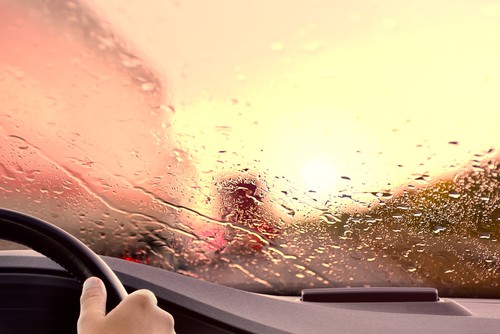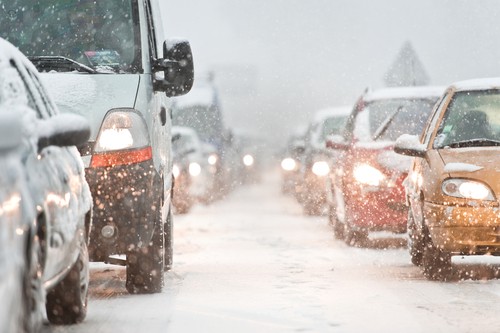Getting into a car accident can lead to physical injuries, vehicle damage, and financial complications. If your car sustains any kind of damage during a wreck, then it is likely that your body has as well. Thankfully, there are car accident chiropractors who can help you recover from your injuries so you can get back to your daily routines and activities. Knowing more about what causes car accidents can help you prevent them from happening to you. While some road accident causes might seem obvious to drivers with a lot of experience on the roads, knowing the top causes of car accidents is helpful for everyone from teenagers with a brand-new driver’s license to someone moving to a new area and getting used to the new roads around them. Here are the 25 leading causes of car accidents.
1. Distracted Driving: This is actually the number one cause of most car accidents that occur each day. Texting while driving, talking on the phone, or eating and drinking while trying to steer can keep you from focusing on the task at hand.
2. Speeding: Speed limits are set for a reason and can differ depending on the type of road, like a local road through town or a major highway. When you drive above the speed limit, you also slow down your reaction time and ability to respond if something happens up ahead.
3. Reckless Driving: If you are in a hurry or feeling impatient, then you might be tempted to drive more recklessly. Reckless driving can include speeding, switching in and out of lanes too quickly, or driving too close to other vehicles on the road.
4. Running a Red Light: Driving through a red light can put you and others in serious danger. When you or someone else runs a red light, serious car accidents at high speeds are more likely to occur with cars coming from multiple directions.
5. Running a Stop Sign: Thousands of car accidents happen each year because someone ran through a stop sign and collided with an oncoming vehicle. Side-impact car accidents are common with running a stop sign, and these can lead to major car accident injuries.
6. Night Driving: Driving at night can be difficult for many drivers because visibility is lower than during the day. When you can’t see as far ahead, you aren’t able to anticipate what might be happening on the road.
7. Driving While Tired: Having difficulty staying awake can seriously impair your ability to drive safely and lead to a car accident injury. When you are tired, your reaction times are slower, and you risk nodding off behind the wheel.
8. Improper Lane Change: Changing lanes on the highway or moving into a turn lane must be done safely in order to avoid a car accident. There are proper ways to change lanes, like checking your mirrors and using a turn signal to indicate your intentions to other drivers.
9. Improper Turning: Certain roads may have signs that prevent turning on a red light or do not allow U-turns. A car accident is more likely to occur when drivers disobey these rules of the road and leave you and other drivers vulnerable.
10. Driving the Wrong Way: One-way roads are common in cities and downtown areas. If you are driving in a place you aren’t familiar with, you don’t want to end up driving the wrong way down a one-way street, or you risk a potential head-on collision.
11. Tailgating: Driving too closely to the driver in front of you can put you at greater risk for a fender-bender or rear-end collision. When a driver doesn’t leave enough space in between cars, there is less room for maneuvering with sudden changes in the flow of traffic.
12. Road Rage: Getting angry at other drivers on the road can lead to road rage incidents that put everyone around you at risk. Tailgating, speeding around another vehicle, and suddenly tapping the breaks can end up causing needless car accidents.
13. Driving Under the Influence: A DUI refers to someone who is driving under the influence of alcohol or drugs and is considered a criminal offense, which can go on your permanent record. Certain medications and sleep aids can also impact your ability to drive safely.
14. Driving While Intoxicated: A DWI is typically a more serious criminal offense and refers to when the driver of a car has been drinking alcohol and putting others on the road in danger.
15. Dangerous Curves: Twisting, winding roads can be dangerous for drivers, especially at night or in poor weather conditions.
16. Animal Crossings: If an animal runs into the road, then you may be tempted to swerve to avoid them. If other drivers are around, then you risk colliding with another vehicle.
17. Road Obstacles: Obstacles in the road can also cause you to swerve out of the way or slam on the breaks, which can put you at greater risk of colliding with other vehicles on the road.
18. Tire Blowout: When a tire blowout occurs, it can cause drivers to lose control of their car and make it difficult to move to a safe place and out of the way of traffic. Tire blowouts with larger vehicles and semi-trucks can also put other vehicles at risk on the road and can leave debris in the roadways.
19. Defective Car Parts: If one or more parts of a vehicle become damaged or defective, they can impact the ability to drive safely. Car parts in the road can also make for road hazards.
20. Street Racing: Street racing may include high speeds and tricky driving maneuvers that are dangerous for everyone involved.
21. New Drivers: New drivers, like teenagers who have just earned their license, don’t yet have the experience and developed reaction times to manage all the rules of the road and hazards of driving.
22. Rain: Wet roads can make for dangerous driving conditions. In addition to slick roads and the risk of hydroplaning, rain can also be distracting on your windshield and affect visibility.
23. Fog: Fog isn’t as common, but when it does happen, the visibility on the road can be so difficult for drivers. Fog can make it difficult for you to even see one car ahead of you.
24. Ice: During the winter months, roads and bridges can ice over, making driving conditions slippery and dangerous for everyone on the roads.
25. Snow: Similar to rain and ice, snow on the roads can make for wet, slick driving conditions and can impact your visibility.
No matter what type of car accident you’ve been in, car accident chiropractors at Affordable Killeen Chiropractic are here to help you!



